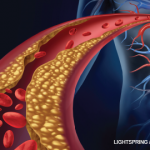 Non-steroidal anti-inflammatory drugs (NSAIDs) are commonly used and effective pain relievers, but they are not without risk. In the U.S., the NSAIDs ibuprofen, naproxen and aspirin are available over the counter (OTC), with the former two agents also available via prescription. In a recent study, David W. Kaufman, ScD, Slone Epidemiology Center at Boston University, and colleagues determined the prevalence of patients exceeding the daily dosing limit of NSAIDs and identified characteristics of dose-exceeding patients.1
Non-steroidal anti-inflammatory drugs (NSAIDs) are commonly used and effective pain relievers, but they are not without risk. In the U.S., the NSAIDs ibuprofen, naproxen and aspirin are available over the counter (OTC), with the former two agents also available via prescription. In a recent study, David W. Kaufman, ScD, Slone Epidemiology Center at Boston University, and colleagues determined the prevalence of patients exceeding the daily dosing limit of NSAIDs and identified characteristics of dose-exceeding patients.1
Exceeding the daily dosing limit often resulted from taking too much of a single NSAID at once, taking different NSAIDs at the same time or failing to wait long enough before taking another dose. Experience has shown that patients often know the names of the products, but do not realize the treatments are part of the same family or have the same mechanism of action. Patients also don’t realize they should not take ibuprofen and naproxen together, or think acetaminophen is in the same class as ibuprofen, an NSAID. Additionally, combination products with NSAIDs may prevent patients from realizing that they are taking a prescription combination product of an NSAID and an OTC product together. Basically, some patients are double dosing and increasing their risk of harm.
The Research
In the study, conducted from May 2015 through March 2016, patients had to have used an ibuprofen-containing product in the preceding 30 days. Participants were not informed that the study was about NSAIDs. More than 207,000 invitations were sent out, and 4,161 people were eligible for the study based on their ibuprofen use. In total, 1,745 adults completed the seven-consecutive day online diary and the exit questionnaire, which obtained demographic information, medical history, physical and mental health status, attitudes regarding label reading and dosing behavior, and knowledge of product label instructions. Of these participants, 1,326 reported the use of ibuprofen at least once, and data from these 1,326 participants were analyzed.
Only 39% of the subjects recognized that all of the products they were taking were NSAIDs. Ninety percent of the diary users took OTC ibuprofen during the week; 37% also took non-ibuprofen NSAIDs. For ibuprofen use, 11% of users exceeded the daily dosing limit. Additionally, 4% of users of other NSAIDs exceeded the daily dosing limit. This excess occurred on 9.1% of NSAID usage days. Also, the daily limit for naproxen was exceeded by 23% of naproxen users, a higher prevalence than for ibuprofen.
Exceeding the daily dosing limit was associated with exceeding the one-time dose, particularly for individuals with one-tablet doses vs. two-tablet doses. Participant characteristics associated with exceeding the daily dosing limit were being male, having chronic or other ongoing pain, having poor physical function, having a high school level education and being a daily smoker. Additionally, these participants had the attitude of “choosing my own dose,” did not start with the lowest recommended dose and had poor knowledge of the recommended one-time and 24-hour doses. Users were more likely to exceed the one-dose medication amount, if they were in severe pain.


